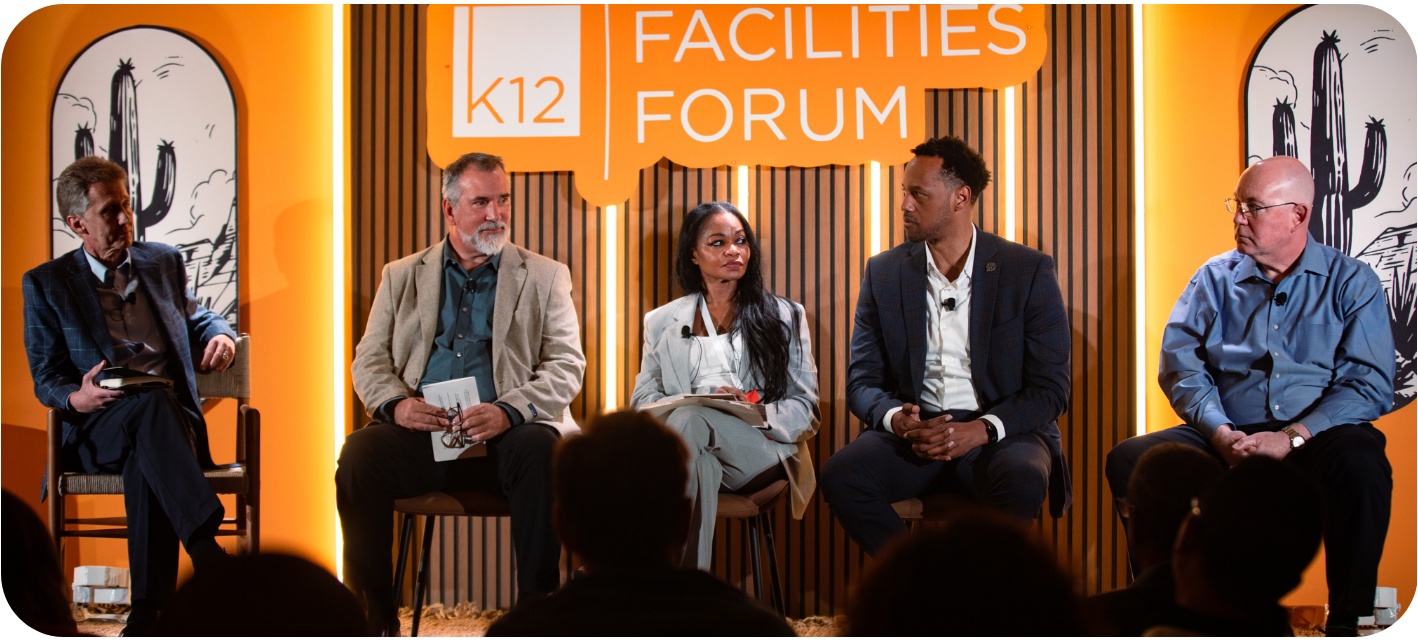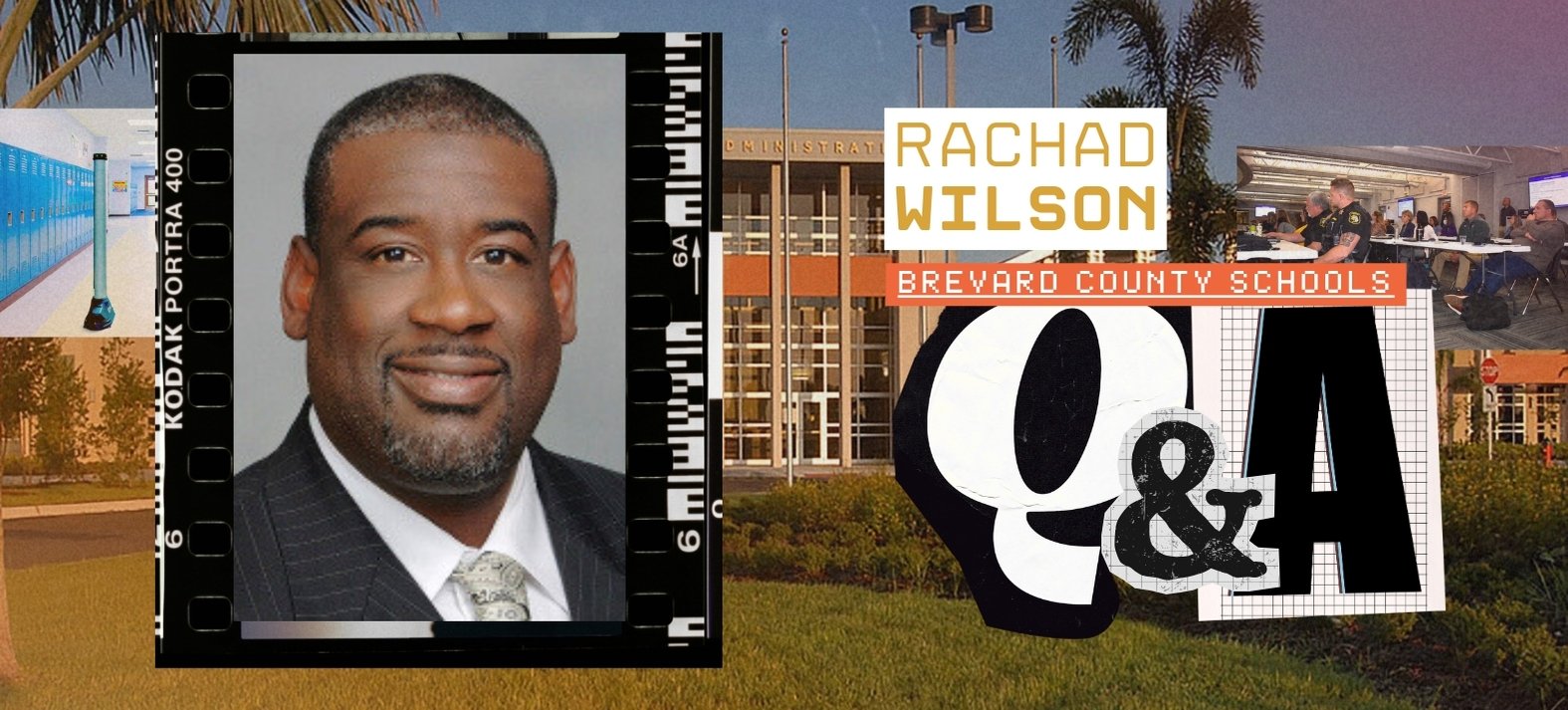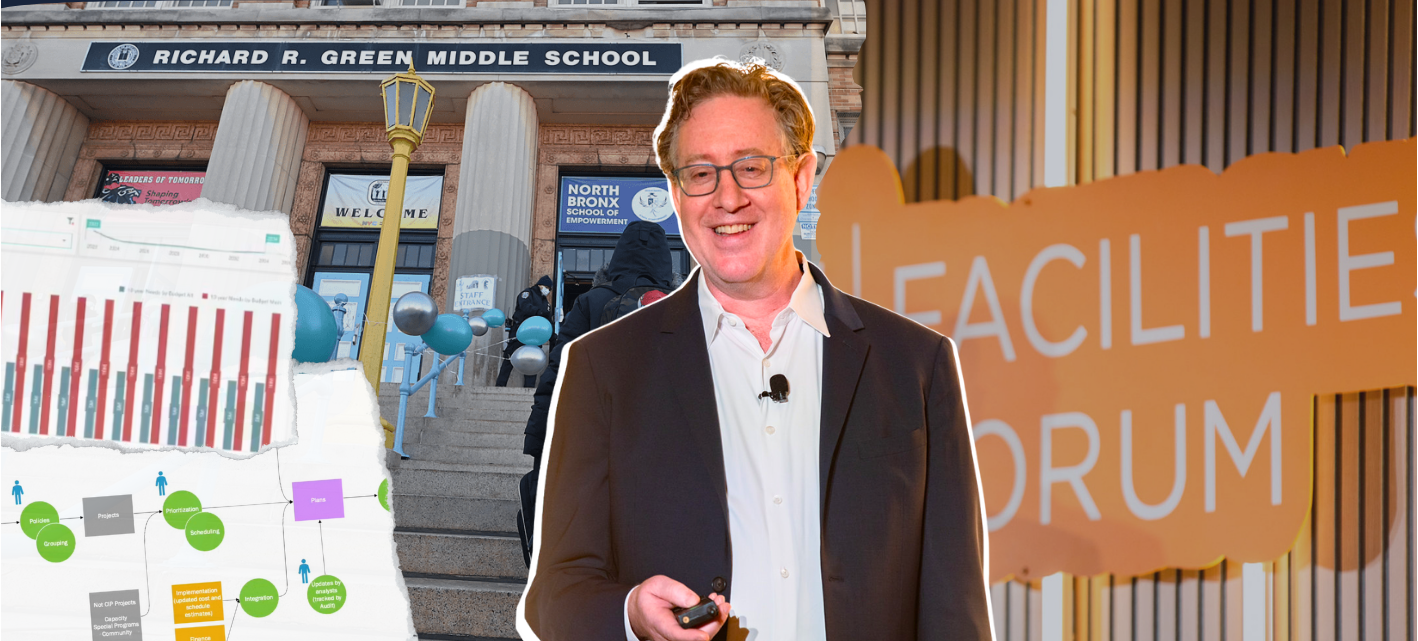At the K12 Facilities Forum, four facilities leaders from some of the nation's largest school districts—representing over 2.8 million students combined—gathered to discuss the complex realities of managing education infrastructure.
Their conversation revealed both shared challenges and remarkably different approaches to issues ranging from enrollment shifts to sustainability initiatives.
The panelists represented diverse urban landscapes: Trena Marsal, COO at Denver Public Schools; John Shea, former CEO of the NYC Department of Education’s Division of School Facilities; Charles Mayfield, COO of Chicago Public Schools; and David Dolan, Chief Maintenance Officer from Palm Beach County Schools. Together, they manage everything from historic buildings to cutting-edge construction, serving communities from affluent suburbs to underinvested neighborhoods.
Who Sets Priorities?
When panel moderator Pete Zuraw, of Gordian, asked about decision-making in a post-election climate, the panelists revealed the complexity of modern school governance. Marsal emphasized Denver's collaborative approach: "Our superintendent did a road show across the district—he listened to our parents, students, staff, and educators to get a very broad perspective as he set our goals."
Shea highlighted a key difference in New York City's mayoral control system vs. board governance: "There are tremendous pressures when politicians think they can actually set the priorities," he said, contrasting this with Denver's policy governance model, where the superintendent has a "reasonable interpretation" of board policies.
The conversation underscored a fundamental tension: while educators should logically set educational priorities, political and governance structures often complicate this ideal.
The Enrollment Rollercoaster
Perhaps no issue illustrates the diversity of challenges facing school districts more than enrollment trends. While Education Week projects three million fewer students nationally by 2031, the reality varies dramatically by region.
- New York City: Growth Through Immigration. Shea described NYC's unique trajectory: from 1.1 million students in 2008 to a COVID dip to 970,000, followed by recovery through migrant populations. "We get paid by the students, so that's been a good thing for us," he noted. However, new class size caps—25 for high school, 23 for grades 4-8, and 20 for elementary—are creating space pressures despite stable enrollment.
- Chicago: Strategic Reinvestment. Mayfield shared Chicago's dramatic story: "About 10-15 years ago we were 400,000-plus strong." After closing approximately 50 schools in 2013—a decision that didn't deliver promised academic improvements—Chicago now manages over 10 million square feet with some buildings serving just 100 students. Rather than more closures, they're implementing "space efficiency," shutting down unused floors while investing $40 million in three schools in the historically disinvested North Lawndale neighborhood.
- Denver: Facing Reality. Marsal described Denver's methodical approach to declining enrollment: down 5,000 students since 2019, losing about 1,600 annually. "Our superintendent presented to the board seven closures and three schools where we'll be restructuring," she announced, noting that spreading students across underutilized space costs the same as maintaining full schools.
- Palm Beach: Continuing Growth. Dolan represented the exception: Palm Beach continues growing, building new schools while managing the challenge of state-mandated cost-per-student-station caps that limit building flexibility and create equity issues across Florida's diverse regions.
The Promise and Challenge of CTE
All four districts are investing heavily in Career Technical Education (CTE), but with different approaches and varying success.
Denver is implementing 12 new CTE programs across the district to ensure regional access, addressing equity concerns where students in less affluent areas couldn't access programs due to transportation barriers. They're also developing apprenticeship programs within their own facilities and technology departments.
Chicago has partnered with vendors like JLL to create turnkey apprenticeship programs, writing pipeline development into contracts to guarantee jobs for high school graduates. "It's significantly important that we have great partnerships with our union partners to build pipelines to postsecondary success that may not always be college," Mayfield said.
However, Shea shared New York's sobering experience with CTE challenges: "One of the saddest parts of my career was that it didn't work." Despite creating a High School for Energy and Technology, they couldn't find qualified instructors willing to teach at UFT-standard salaries when industry professionals earn significantly more.
Their success has come through internship programs pairing students with the district's 400 skilled trades employees.
The panelists acknowledged a persistent concern: ensuring CTE programs don't inadvertently track black and brown students away from college. As Marsal noted, "We're trying to ensure we have that equity—we're providing education around opportunities, and students can advocate and make their own choices."
Sustainability: From Electric Buses to All-Electric Buildings
Sustainability initiatives revealed both ambitious goals and practical challenges across the districts.
Mayfield is managing Chicago's transition to 50 electric buses through federal grants, building the infrastructure and staffing to maintain them—no small task for a district currently using 20-25 transportation vendors.
Denver has perhaps the most comprehensive approach, with a student-led climate action policy encompassing six areas: built environment, smart buildings, transportation, resource management, wellness, and environmental justice. Their goals include making 80% of heating load all-electric for 10 buildings over five years and sourcing 65% of electricity from renewables. "Our students actually set some of our goals," Marsal explained, highlighting youth involvement in sustainability planning.
However, practical concerns persist. Marsal expressed worry about Colorado's charging infrastructure for their 20 electric buses and future replacement costs: "Will there be a grant once those reach end of life? They're a lot more expensive."
Looking Forward
The conversation revealed that while these four districts face similar pressures—aging infrastructure, funding constraints, changing demographics—their responses reflect local governance structures, community values, and regional economic realities.
Whether it's New York's density-driven space challenges, Chicago's commitment to neighborhood reinvestment, Denver's data-driven closure decisions, or Palm Beach's growth management, each district is pioneering approaches that other systems can learn from.
The session underscored that excellence in K-12 facilities isn't about having the most resources—it's about understanding your community's unique needs and having the courage to make difficult decisions in service of student success.
🎥 Watch the full discussion below...
Posted by
Join us at the K12 Facilities Forum!
The community for district and facilities leaders
Nov 8-10, 2026 | San Antonio, TX








-3.png)

Comments